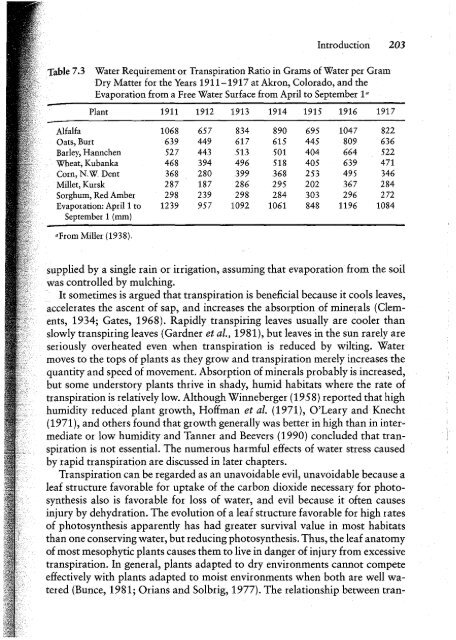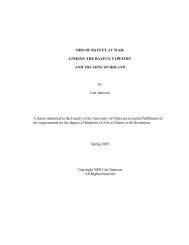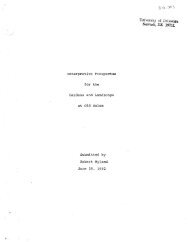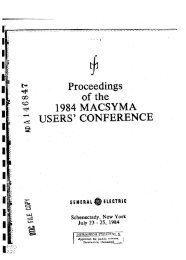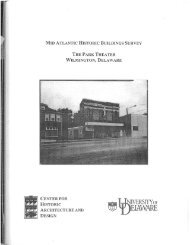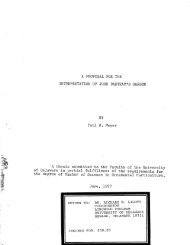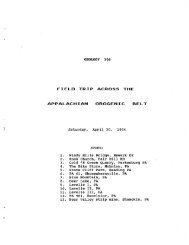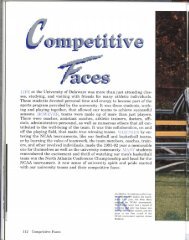Transpiration and the Ascent
Transpiration and the Ascent
Transpiration and the Ascent
Create successful ePaper yourself
Turn your PDF publications into a flip-book with our unique Google optimized e-Paper software.
Introduction 203<br />
Table 7.3 Water Requirement or <strong>Transpiration</strong> Ratio in Grams of Water per Gram<br />
Dry Matterfor <strong>the</strong> Years 1911-1917 at Akron, Colorado, <strong>and</strong> <strong>the</strong><br />
Evaporation from a Free Water Surface from April to September 1a<br />
Plant 1911 1912 1913 1914 1915 1916 1917<br />
Alfalfa 1068 657 834 890 695 1047 822<br />
Oats, Burt 639 449 617 615 445 809 636<br />
Badey, Hannchen 527 443 513 501 404 664 522<br />
Wheat, Kubanka 468 394 496 518 405 639 471<br />
Corn, N..W. Dent 368 280 399 368 253 495 346<br />
Millet, Kursk 287 187 286 295 202 367 284<br />
Sorghum, Red Amber 298 239 298 284 303 296 272<br />
Evaporation: April 1 to 1239 957 1092 1061 848 1196 1084<br />
September 1 (mm)<br />
aFrom Miller (1938).<br />
supplied by a single rain or irrigation, assuming that evaporation from <strong>the</strong> soil<br />
was controlled by mulching.<br />
It sometimes is argued that transpiration is beneficial because it cools leaves,<br />
accelerates <strong>the</strong> ascent of sap, <strong>and</strong> increases <strong>the</strong> absorption of minerals (Clements,<br />
1934; Gates, 1968). Rapidly transpiring leaves usually are cooler than<br />
slowly transpiring leaves (Gardner et at., 1981), but leaves in <strong>the</strong> sun rarely are<br />
seriously overheated even when transpiration is reduced by wilting. Water<br />
moves to <strong>the</strong> tops of plants as <strong>the</strong>y grow <strong>and</strong> transpiration merely increases <strong>the</strong><br />
quantity <strong>and</strong> speed of movement. Absorption of minerals probably is increased,<br />
but some understory plants thrive in shady, humid habitats where <strong>the</strong> rate of<br />
transpiration is relatively low. Although Winneberger (1958) reported that high<br />
humidity reduced plant growth, Hoffman et at. (1971), O'Leary <strong>and</strong> Knecht<br />
(1971), <strong>and</strong> o<strong>the</strong>rs found that growth generally was better in high than in intermediate<br />
or low humidity <strong>and</strong> Tanner <strong>and</strong> Beevers (1990) concluded that transpiration<br />
is not essential. The numerous harmful effects of water stress caused<br />
by rapid transpiration are discussed in tater chapters.<br />
<strong>Transpiration</strong> can be regarded as an unavoidable evil, unavoidable because a<br />
leaf structure favorable for uptake of <strong>the</strong> carbon dioxide necessary for photosyn<strong>the</strong>sis<br />
also is favorable for loss of water, <strong>and</strong> evil because it often causes<br />
injury by dehydration. The evolution of a lear structure favorable for high rates<br />
of photosyn<strong>the</strong>sis apparently has had greater survival value in most habitats<br />
than one conserving water, but reducing photosyn<strong>the</strong>sis. Thus, <strong>the</strong> leaf anatomy<br />
of most mesophytic plants causes <strong>the</strong>m to live in danger of injury from excessive<br />
transpiration. In general, plants adapted to dry environments cannot compete<br />
effectively with plants adapted to moist environments when both are well watered<br />
(Bunce, 1981; Orians <strong>and</strong> Solbrig, 1977). The relationship between tran-


